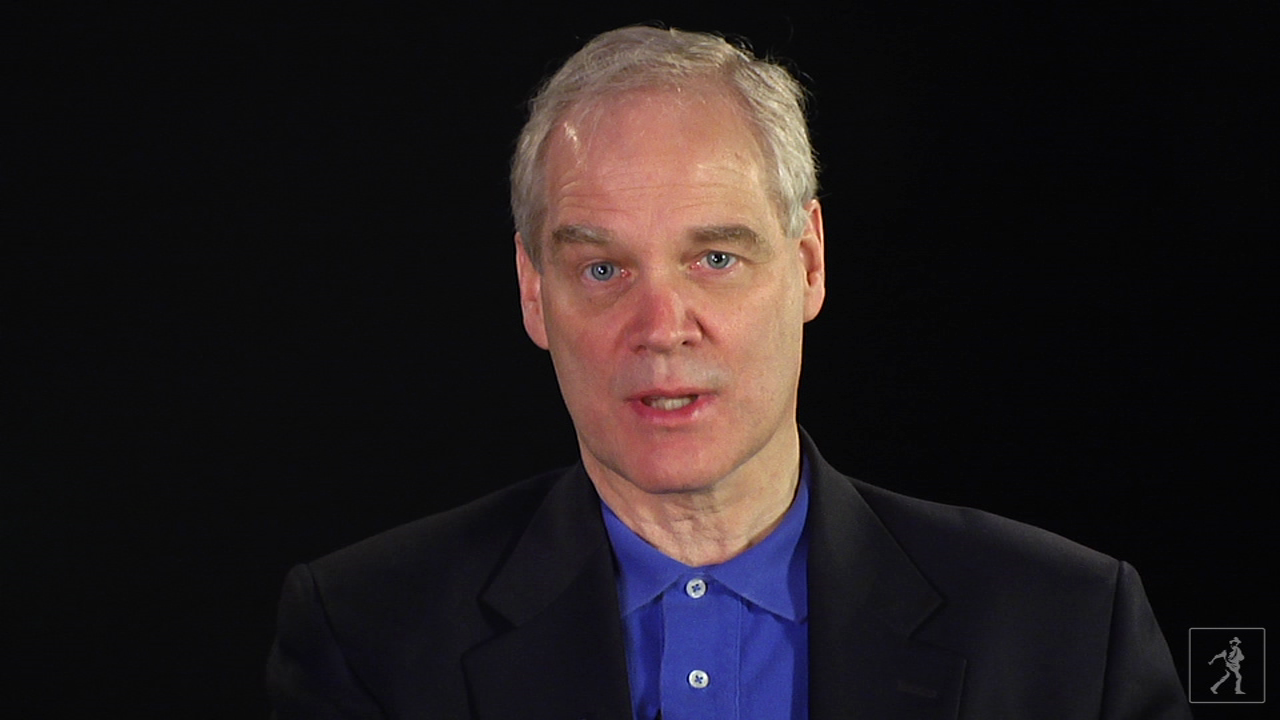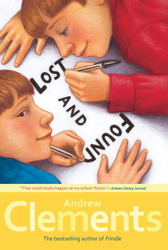Get our latest book recommendations, author news, and competitions right to your inbox.
Table of Contents
About The Book
Ted Hammond loves a good mystery, and in the spring of his fifth-grade year, he's working on a big one. How can his school in the little town of Plattsford stay open next year if there are going to be only five students? Out here on the Great Plains in western Nebraska, everyone understands that if you lose the school, you lose the town.
But the mystery that has Ted's full attention at the moment is about that face, the face he sees in the upper window of the Andersons' house as he rides past on his paper route. The Andersons moved away two years ago, and their old farmhouse is empty, boarded up tight. At least it's supposed to be.
A shrinking school in a dying town. A face in the window of an empty house. At first these facts don't seem to be related. But Ted Hammond learns that in a very small town, there's no such thing as an isolated event. And the solution of one mystery is often the beginning of another.
But the mystery that has Ted's full attention at the moment is about that face, the face he sees in the upper window of the Andersons' house as he rides past on his paper route. The Andersons moved away two years ago, and their old farmhouse is empty, boarded up tight. At least it's supposed to be.
A shrinking school in a dying town. A face in the window of an empty house. At first these facts don't seem to be related. But Ted Hammond learns that in a very small town, there's no such thing as an isolated event. And the solution of one mystery is often the beginning of another.
Reading Group Guide
Join our mailing list! Get our latest book recommendations, author news, and competitions right to your inbox.
By clicking 'Sign me up' I acknowledge that I have read and agree to the privacy policy and terms of use, and the transfer of my personal data to the United States, where the privacy laws may be different than those in my country of residence.
Discussion Topics
What do the opening pages of the novel tell readers about Ted's daily routine, his town, and his feelings about both? What is different about the morning on which the story begins?
Describe the Red Prairie Learning Center. How is it similar to, or different from, your school? Would you like to go to school in Plattsford? Why or why not?
How does Ted's love of mysteries affect his investigation of the face in the farmhouse window? Was he correct in going to the farmhouse alone?
How have April and her family come to be hiding in the farmhouse? Do you think April is making a good choice to hide there? Explain your answer.
How does being a Boy Scout affect Ted's actions? Given the situation, can Ted act honestly toward everyone -- April, his family, Ruby Cantrell at the E&A Market, Mrs. Mitchell -- at the same time? Have you ever found that keeping a secret for one person required you to behave dishonestly toward another? How did this make you feel? How did you solve your dilemma?
How has Mrs. Mitchell made her small schoolhouse situation work? What are he concerns for the Red Prairie Learning Center's future? How does Mrs. Mitchell's home life affect her concerns? Compare Mrs. Mitchell's situation to Mr. Hammond's outlook for his farm. What similarities or differences do you note?
Why does Ted tell his secret to Mrs. Mitchell? How does she feel about keeping Ted's confidence? What does she do? How does Ted feel about her actions?
What happens when Ted discovers April's family gone from the Anderson farmhouse? What was Deputy Linwood really investigating? What does this confusion suggest about keeping secrets? Where does Ted find April?
What does Ted decide is the best way to help April and her family? To whom does he reach out for help? What effects do his actions have upon his town?
Is Ted ultimately able to help April? How do the efforts of his town ultimately help others? How does this, in turn, help Plattsford?
Describe ways in which your school, religious, or civic groups reach out to others. Have you ever participated in such efforts? How did this make you feel? Why is it important for communities to offer help to those in need?
Imagine you are Ted as a senior in high school. Looking back, how might you describe your Room One mystery experience? What is the most important thing you learned?
Activities and Research
Write a letter to Ted recommending a mystery novel. Explain why you think he will enjoy the book and whether or not you think he can solve the case before the final page. If desired, share your recommendation with friends or classmates.
Create a class survey about jobs. How many students have jobs? Do students plan to get jobs and at what age? What jobs would they like to try? How many students have daily chores at home? How many receive allowances? Compile the results of your survey into a short report, including graphs or tables.
On a two-columned chart, compare Ted's school to your own. Consider the building, class size, daily routines and other observations. In small groups, research different ways kids are educated, from public schools to homeschooling. Use your research for a classroom debate on the best types of learning settings.
In the character of April, write a series of journal entries describing: how you feel when you spot Ted through the window; why you decide to tell Ted your story; your feelings about losing your dad in the war; your concerns about your mother; your feelings just before leaving Plattsford.
In the character of Mrs. Mitchell, list the pros and cons of keeping Ted's secret. Discuss your list with friends or classmates. Vote to see whether most kids agree or disagree with Mrs. Mitchell's actions. Ask students to explain their votes.
Go online to learn more about the Boy Scouts (www.scouting.org) and/or Girl Scouts (www.girlscouts.org). Then write a short essay describing scouting values and conduct codes, or about other groups or organizations to which you belong that have a strong impact on your behavior.
With friends or classmates, role-play one of the following conversations from the novel: Ted telling April about his plan to help her family; Mrs. Mitchell asking Superintendant Seward not to close Red Prairie Learning Center; Plattsford residents telling television reporters about trying to help April and her family.
Create an imaginary blog for Red Prairie Learning Center. What would you call your blog? Write a series of postings in the character of Ted, Mrs. Mitchell, and other students in the classroom. What links might the group suggest offering? How might Ted's encounter with April affect the content of the blog?
What do the opening pages of the novel tell readers about Ted's daily routine, his town, and his feelings about both? What is different about the morning on which the story begins?
Describe the Red Prairie Learning Center. How is it similar to, or different from, your school? Would you like to go to school in Plattsford? Why or why not?
How does Ted's love of mysteries affect his investigation of the face in the farmhouse window? Was he correct in going to the farmhouse alone?
How have April and her family come to be hiding in the farmhouse? Do you think April is making a good choice to hide there? Explain your answer.
How does being a Boy Scout affect Ted's actions? Given the situation, can Ted act honestly toward everyone -- April, his family, Ruby Cantrell at the E&A Market, Mrs. Mitchell -- at the same time? Have you ever found that keeping a secret for one person required you to behave dishonestly toward another? How did this make you feel? How did you solve your dilemma?
How has Mrs. Mitchell made her small schoolhouse situation work? What are he concerns for the Red Prairie Learning Center's future? How does Mrs. Mitchell's home life affect her concerns? Compare Mrs. Mitchell's situation to Mr. Hammond's outlook for his farm. What similarities or differences do you note?
Why does Ted tell his secret to Mrs. Mitchell? How does she feel about keeping Ted's confidence? What does she do? How does Ted feel about her actions?
What happens when Ted discovers April's family gone from the Anderson farmhouse? What was Deputy Linwood really investigating? What does this confusion suggest about keeping secrets? Where does Ted find April?
What does Ted decide is the best way to help April and her family? To whom does he reach out for help? What effects do his actions have upon his town?
Is Ted ultimately able to help April? How do the efforts of his town ultimately help others? How does this, in turn, help Plattsford?
Describe ways in which your school, religious, or civic groups reach out to others. Have you ever participated in such efforts? How did this make you feel? Why is it important for communities to offer help to those in need?
Imagine you are Ted as a senior in high school. Looking back, how might you describe your Room One mystery experience? What is the most important thing you learned?
Activities and Research
Write a letter to Ted recommending a mystery novel. Explain why you think he will enjoy the book and whether or not you think he can solve the case before the final page. If desired, share your recommendation with friends or classmates.
Create a class survey about jobs. How many students have jobs? Do students plan to get jobs and at what age? What jobs would they like to try? How many students have daily chores at home? How many receive allowances? Compile the results of your survey into a short report, including graphs or tables.
On a two-columned chart, compare Ted's school to your own. Consider the building, class size, daily routines and other observations. In small groups, research different ways kids are educated, from public schools to homeschooling. Use your research for a classroom debate on the best types of learning settings.
In the character of April, write a series of journal entries describing: how you feel when you spot Ted through the window; why you decide to tell Ted your story; your feelings about losing your dad in the war; your concerns about your mother; your feelings just before leaving Plattsford.
In the character of Mrs. Mitchell, list the pros and cons of keeping Ted's secret. Discuss your list with friends or classmates. Vote to see whether most kids agree or disagree with Mrs. Mitchell's actions. Ask students to explain their votes.
Go online to learn more about the Boy Scouts (www.scouting.org) and/or Girl Scouts (www.girlscouts.org). Then write a short essay describing scouting values and conduct codes, or about other groups or organizations to which you belong that have a strong impact on your behavior.
With friends or classmates, role-play one of the following conversations from the novel: Ted telling April about his plan to help her family; Mrs. Mitchell asking Superintendant Seward not to close Red Prairie Learning Center; Plattsford residents telling television reporters about trying to help April and her family.
Create an imaginary blog for Red Prairie Learning Center. What would you call your blog? Write a series of postings in the character of Ted, Mrs. Mitchell, and other students in the classroom. What links might the group suggest offering? How might Ted's encounter with April affect the content of the blog?
About The Illustrator
Mark Elliott has a BFA in illustration from the School of Visual Arts. He has illustrated a number of book covers, and his work has been exhibited at the Society of Illustrators and the Art Directors Guild. Mark lives on a sheep farm in the Hudson Valley region of New York.
Product Details
- Publisher: Atheneum Books for Young Readers (August 28, 2012)
- Length: 192 pages
- ISBN13: 9780689866876
- Ages: 8 - 12
Browse Related Books
Awards and Honors
- Garden State Children's Book Award Nominee (NJ)
- South Carolina Picture Book Award Nominee
- Young Hoosier Book Award Nominee (IN)
- Louisiana Young Readers' Choice Award Nominee
- Indian Paintbrush Book Award Nominee (WY)
- Pennsylvania Young Reader's Choice Award Master List
- SSLI Book Award Honor Book
- Pacific Northwest Young Reader's Choice Award Master List
- Golden Sower Award Nominee (NE)
- Charlie May Simon Children's Book Award Nominee (AR)
- Edgar Allan Poe Award
- Parent's Choice Award Recommended
Resources and Downloads
High Resolution Images
- Book Cover Image (jpg): Room One Trade Paperback 9780689866876(2.2 MB)
- Author Photo (jpg): Andrew Clements Photo Credit:(0.1 MB)
Any use of an author photo must include its respective photo credit























